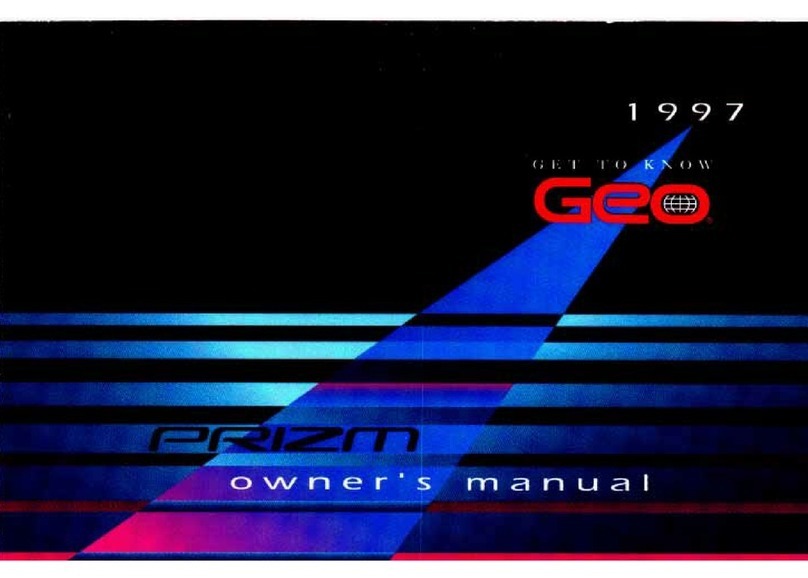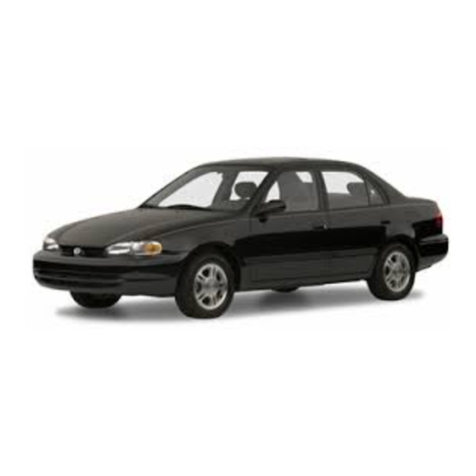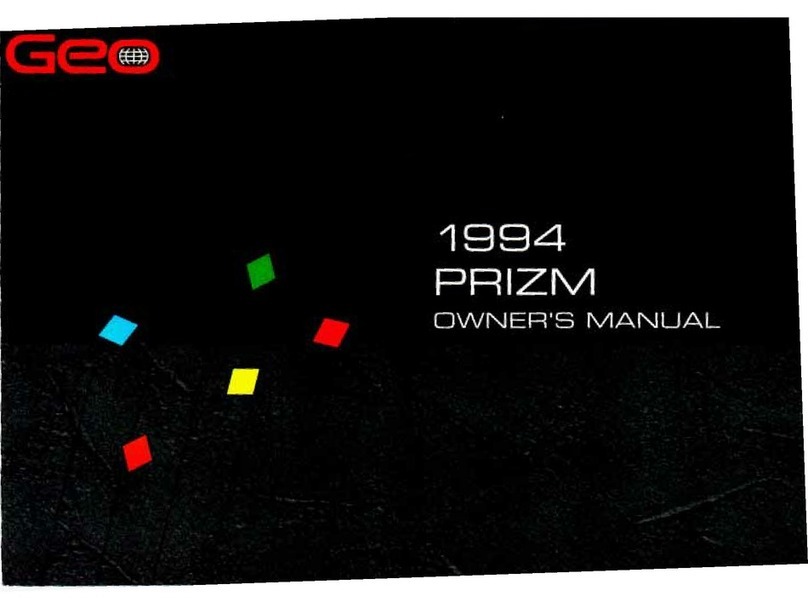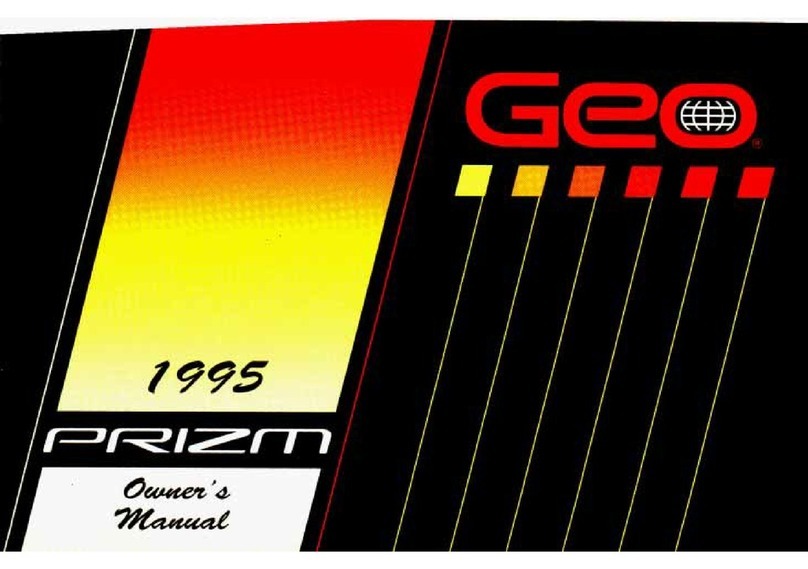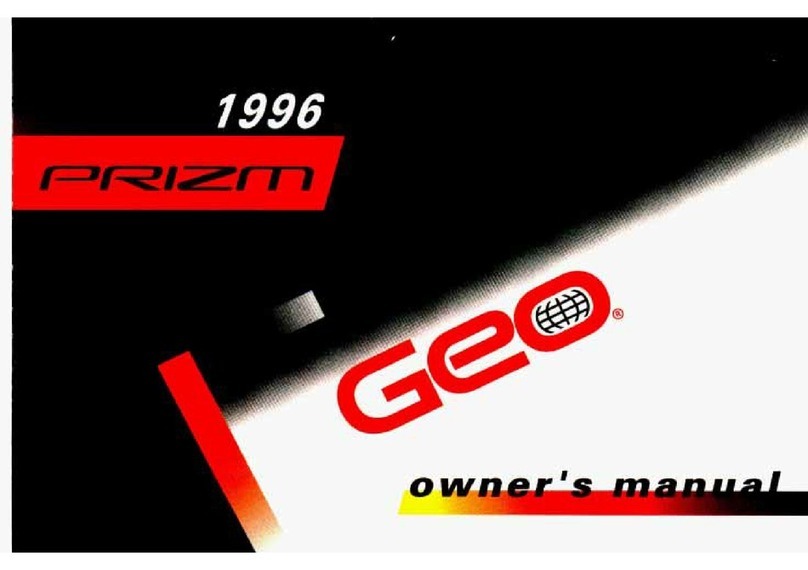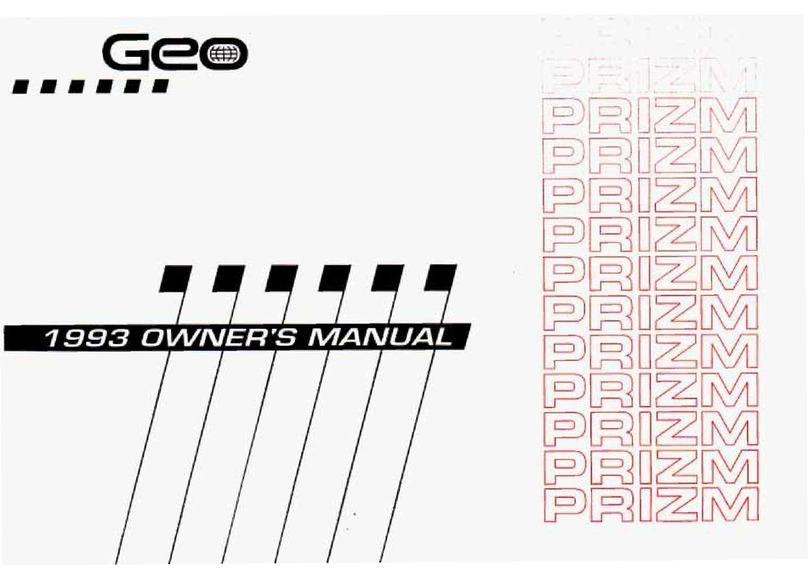Gem
The
1996
Geo
Tracker
Owner’s
Manual
Seats
and
RestraintSystems
.............................................................
This sectiontells you how to use your seats andsafety belts properly.It also explains the air bag system.
FeaturesandControls
..................................................................
,Thissection explains how to start and operate your
Geo.
This
section tells
you
how
to adjustthe ventilation and comfort controlsand how
to
operate your
audio system.
Comfort Controlsand Audio
Systems
.....................................................
YourDrivingandtheRoad
..............................................................
Here you’ll find helpful information and tipsabout the roadand how
to
drive under different conditions.
ProblemsontheRoad
..................................................................
This section tells
you
what to
do
if
you
have a problem whiledriving,such as a flat
tire
or
overheated
engine,etc.
Here
the
manual tells
you
how to keep your Georunningproperlyand
looking
good.
<
This
section
tells
you
when toperform vehiclemaintenance and what fluids and lubricants to use.
This
sectiontells you how
to
contact Chevrolet/Geo for assistanceand
how
to get service and owner
publications.
It
also gives
you
informationon “ReportingSafety Defects” on page
8-8.
Here’s
an
alphabetical
listing
of almost every subject in this manual.
You
can use it to quickly find
somethingyou want to read.
ServiceandAppearanceCare.
...........................................................
.MaintenanceSchedule..................................................................
CustomerAssistanceInformation
........................................................
Index
................................................................................
1-1
2-
1
3-1
4-1
5-1
6-1
7-1
8-1
9-1
i
